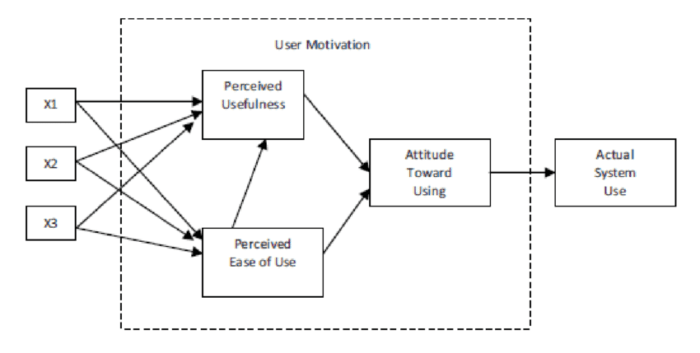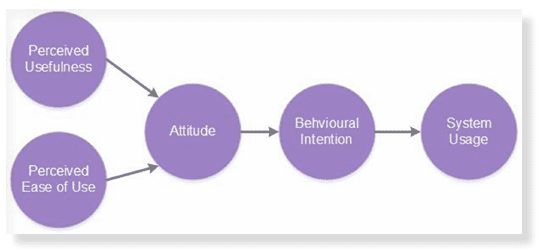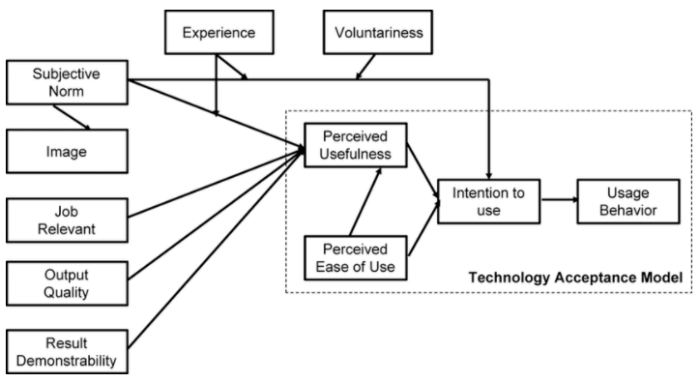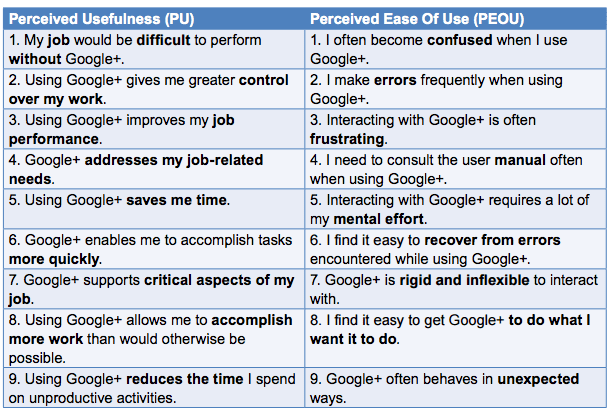A strategic digital marketing model of technology acceptance for those looking to bring about digital transformation
The Technology Acceptance Model (TAM) is designed to measure the adoption of new technology based on customer attitudes.
TAM is largely credited to Fred Davis in 1986, when he was part of the Computer and Information Systems, Graduate School of Business Administration at the University of Michigan in the US. Although there are now many variations of the model, the original Technology Acceptance Model is agreed as the following:

This was at a time when computers were being introduced into the workplace and Davis was looking for a way to predict and explain system use both for vendors and IT managers.
Free digital marketing plan template
Our popular marketing planning template is structured across the Smart Insights RACE Framework. Join Smart Insights as a Free Member to download our digital marketing plan template today
Access the Free digital marketing plan template
TAM states that the success of the new technology adoption is based on positive attitudes towards two measures:
- Perceived usefulness
- Perceived ease of use
Its foundations lie further back in time when Ajzen and Fishbein (1980) developed the ‘Theory of Reasoned Action’, but Davis wanted an easier to use model, to look at technology at work.
Recognized as a leading model in explaining users’ behaviour towards technology, many researchers have subsequently developed and extended this model, creating more complicated versions, but the original model is still used and widely recognized.
This model was a forerunner of measuring user experience and the questions applied in the original study are still valid today.

Free digital marketing plan template
Our popular marketing planning template is structured across the Smart Insights RACE Framework. Join Smart Insights as a Free Member to download our digital marketing plan template today
Access the Free digital marketing plan template
Adaptations of the model have also been made to address 'variance in individuals' intention use the new technology system', such as the Venkatesh and Bala, 2008 model:
"Venkatesh and Davis (2000) extended the original TAM model to explain Perceived Usefulness and usage intentions in terms of Social Influence and cognitive instrumental processes (Subjective Norm, Image, Job Relevance, Output Quality and Result Demonstrability), but they omitted ATU."

This model can be used when considering rolling out a new piece of technology to the whole business, after an initial trial. Conduct surveys of staff to ascertain the perceived usefulness and perceived ease of use. Rating answers on the scale below, you can build a score for each value, and then use this to evaluate your staff's overall attitude towards the technology.

For example, the questions below could be used to ascertain the value of Google+ (below) or other social networks to your marketing team.

The Technology Acceptance Model is a good foundation for creating a new web portal, especially in the B2B area. Many companies organize login areas for clients to enable online order processing. Using TAM ensures you can create a more useful and easier to use system than your competitors.
Free digital marketing plan template
Our popular marketing planning template is structured across the Smart Insights RACE Framework. Join Smart Insights as a Free Member to download our digital marketing plan template today
Access the Free digital marketing plan template













